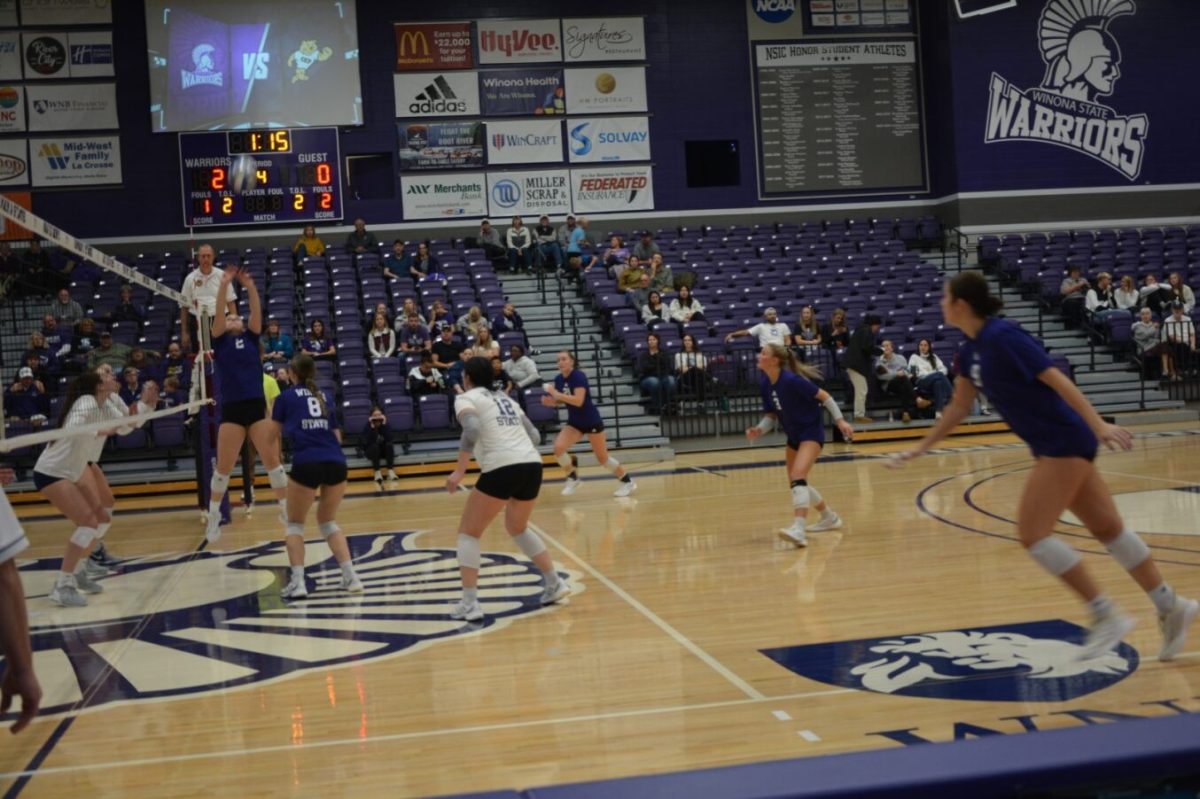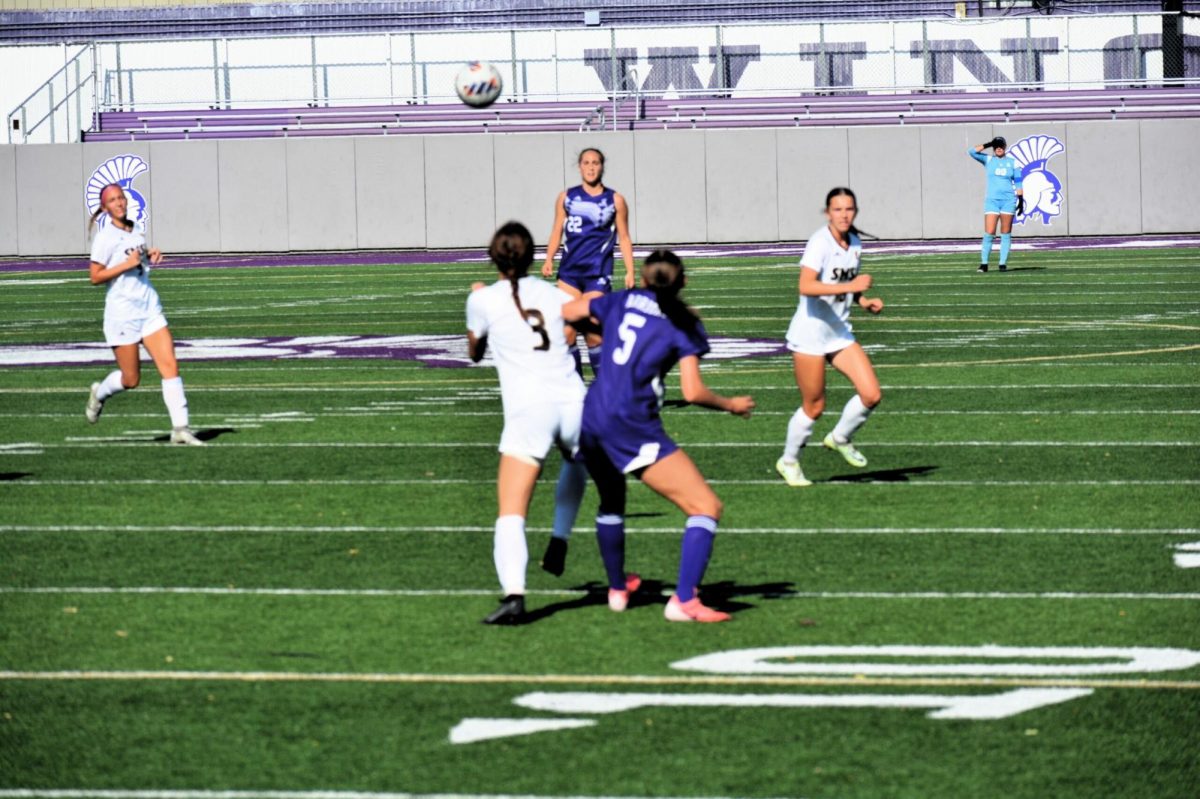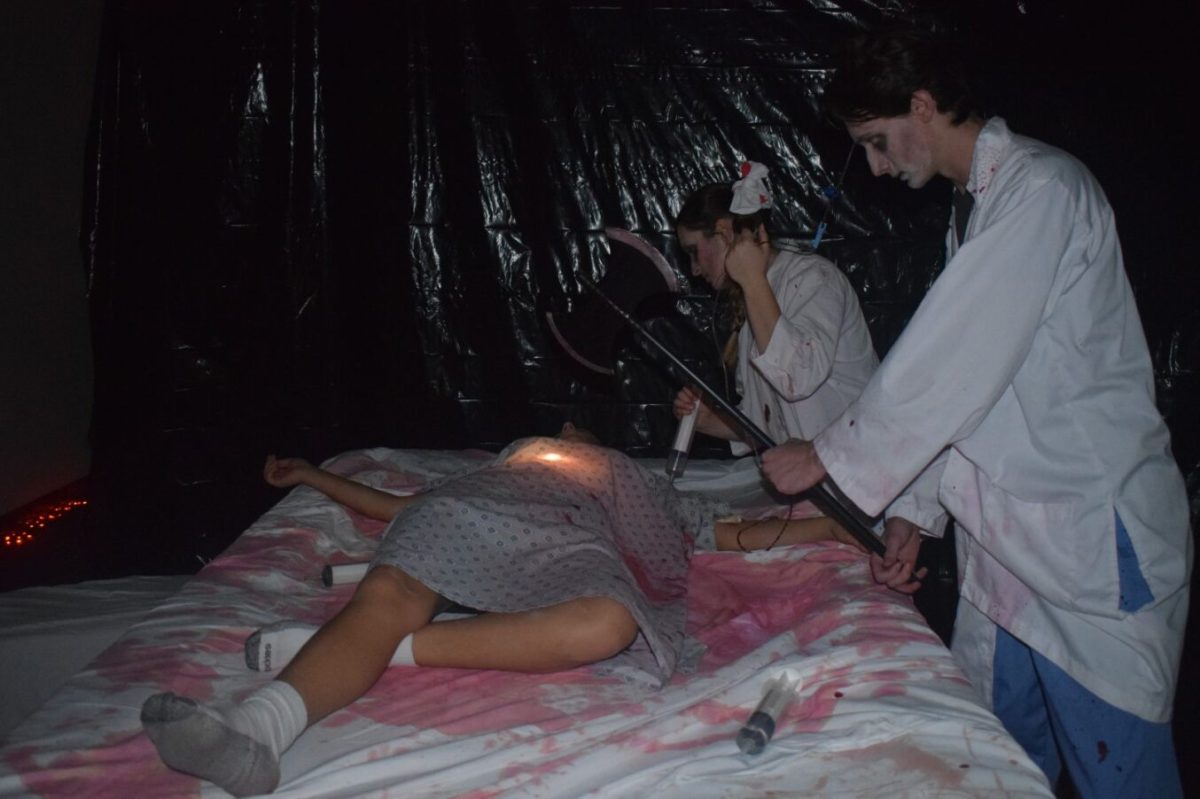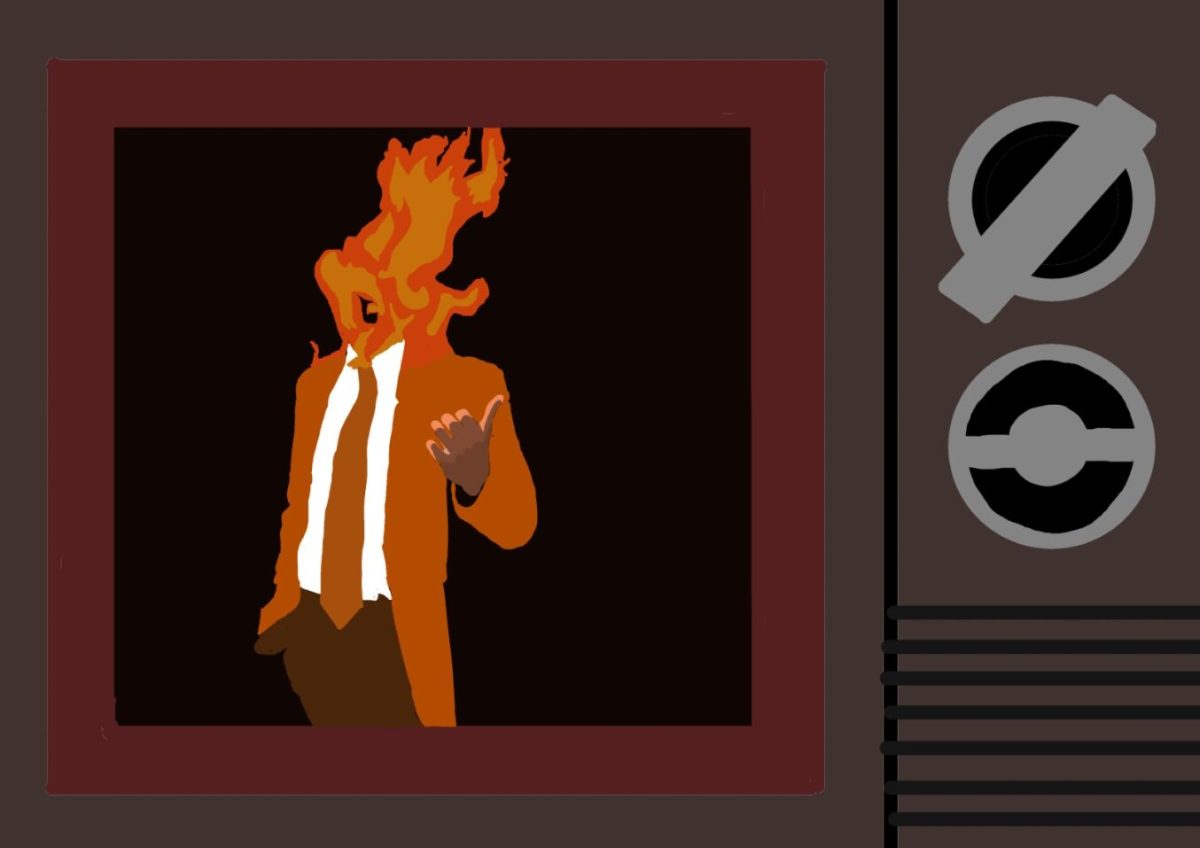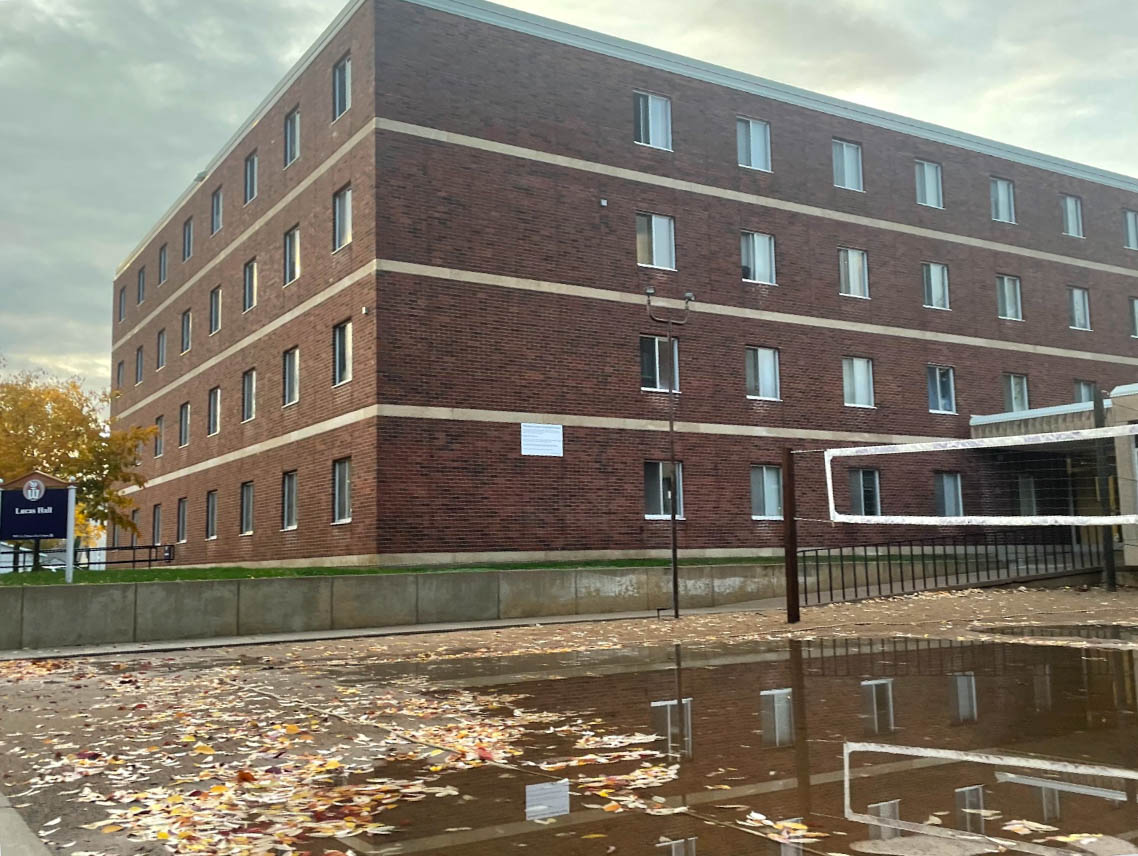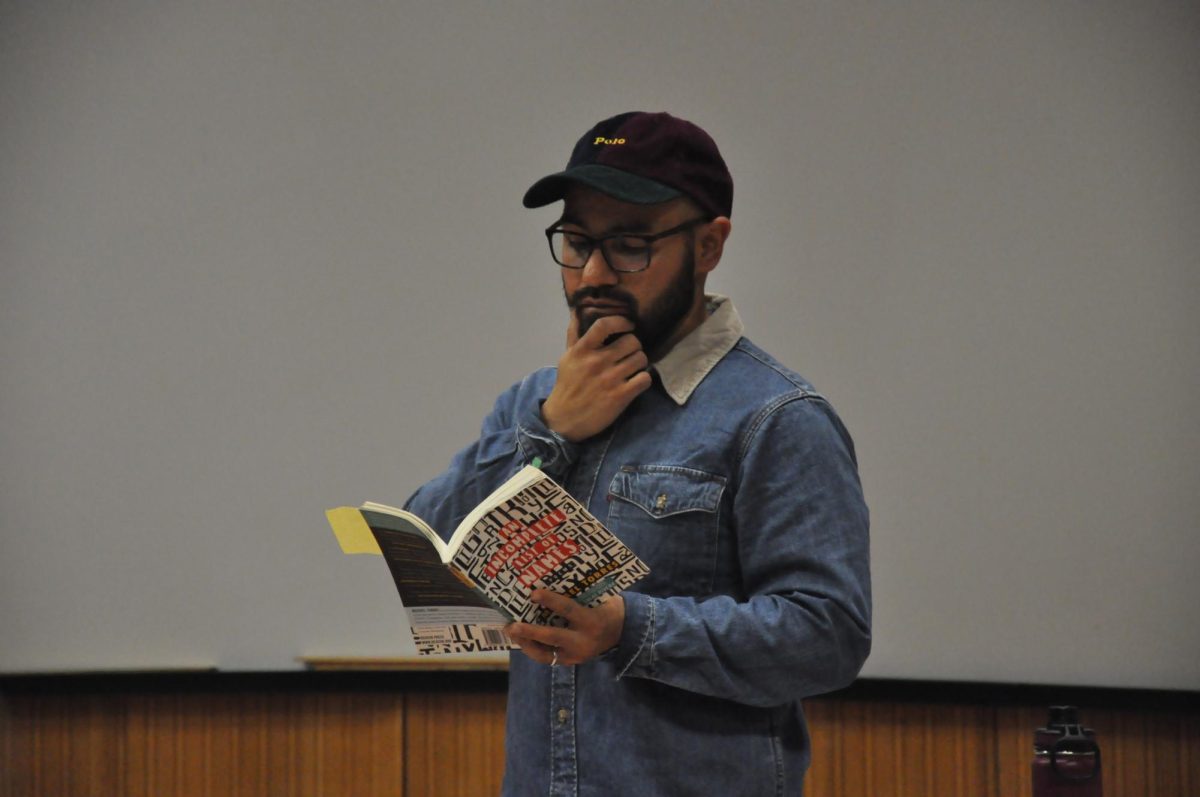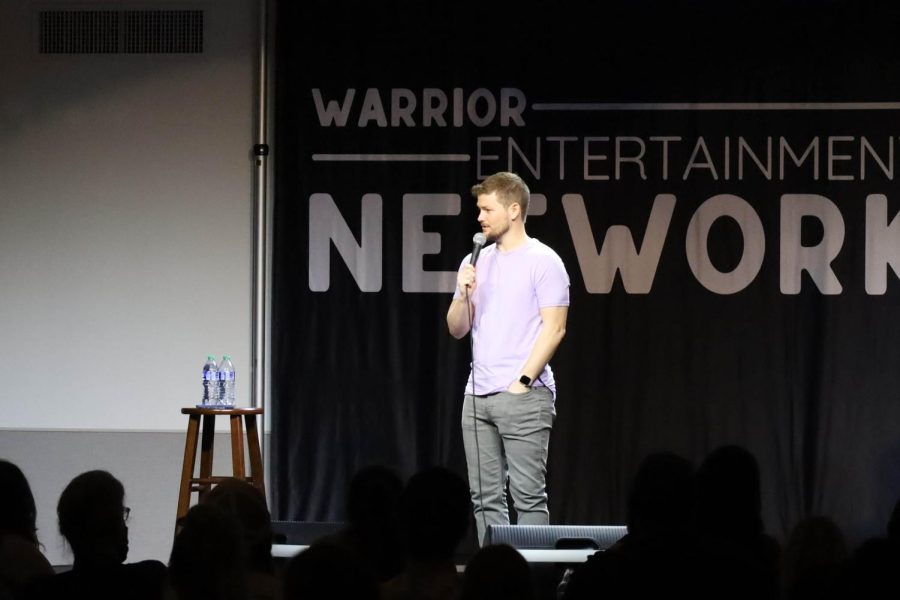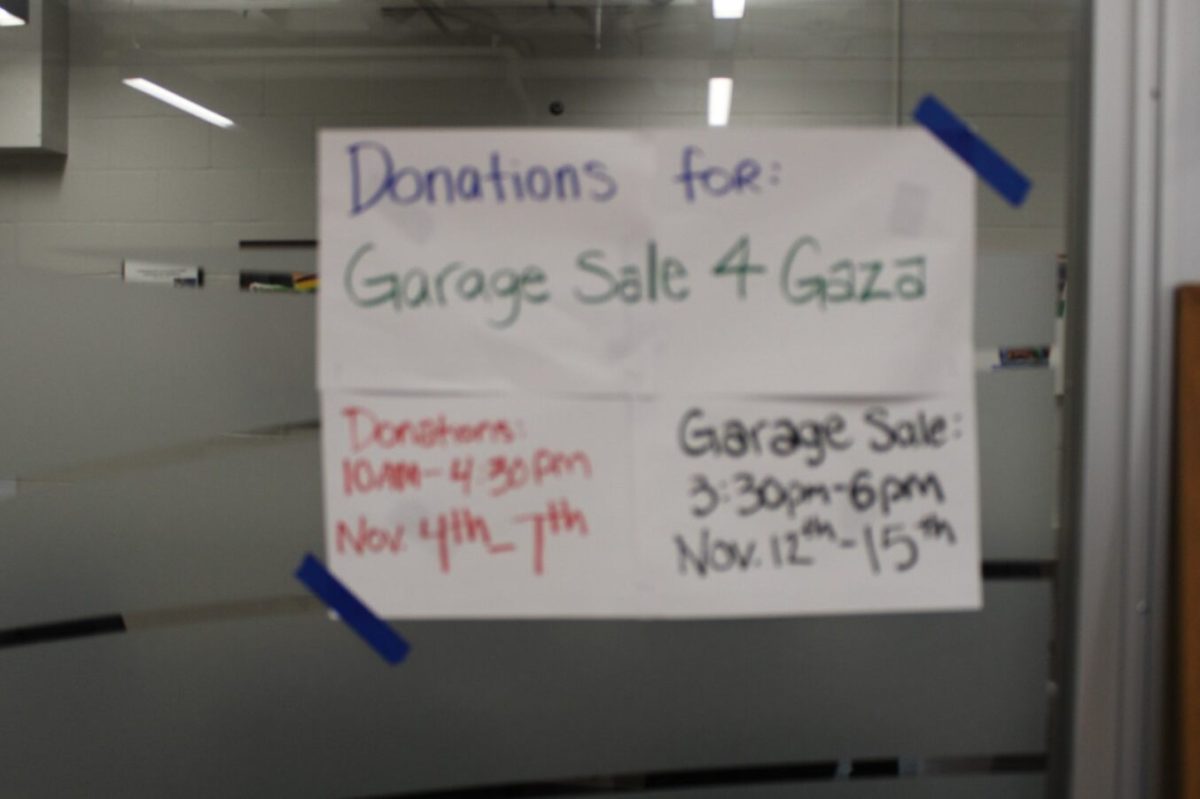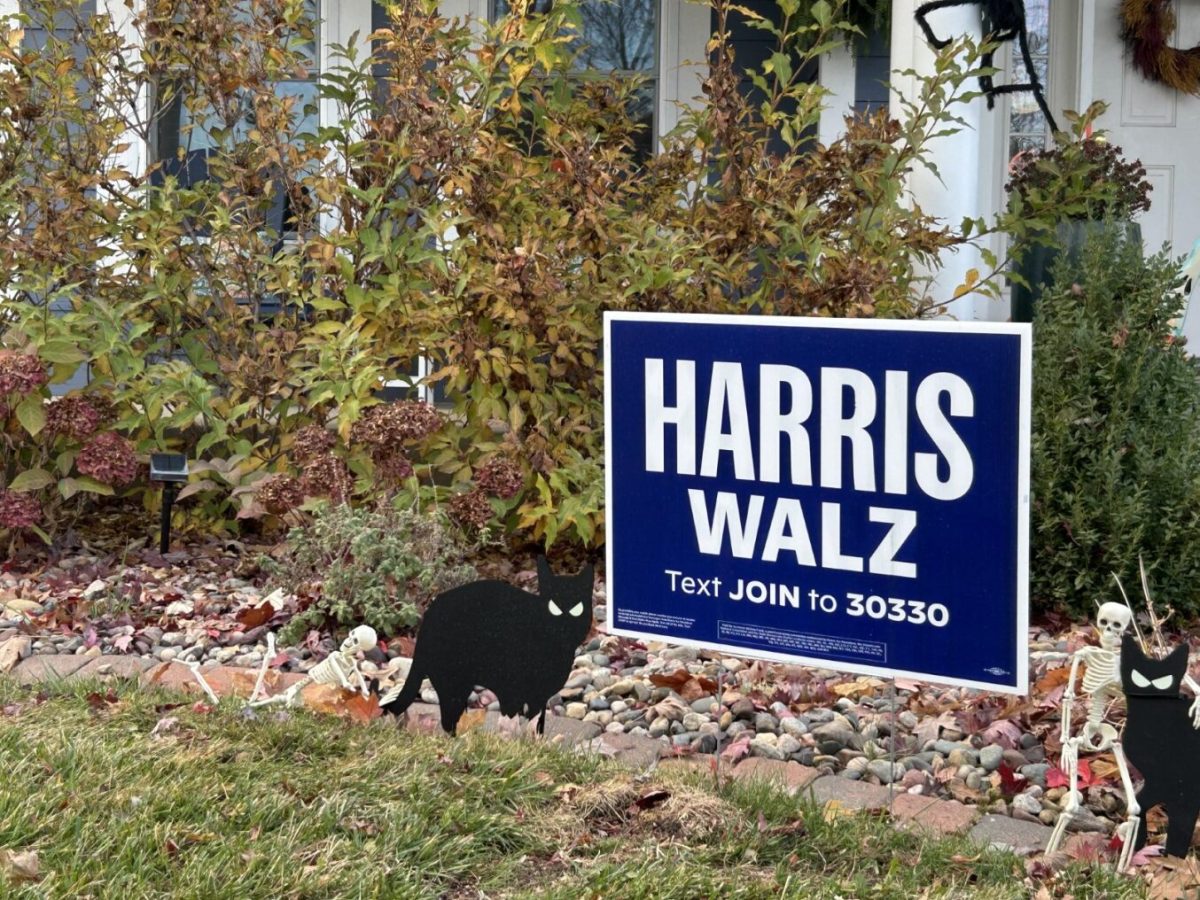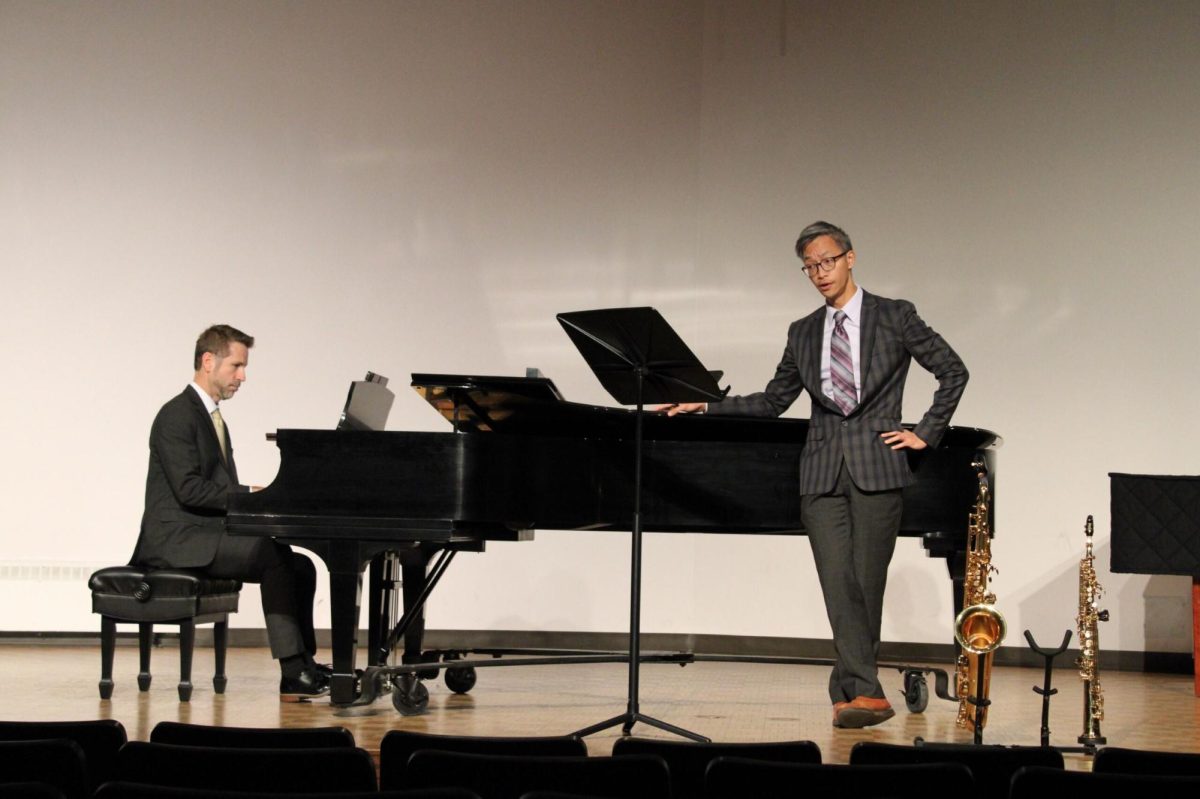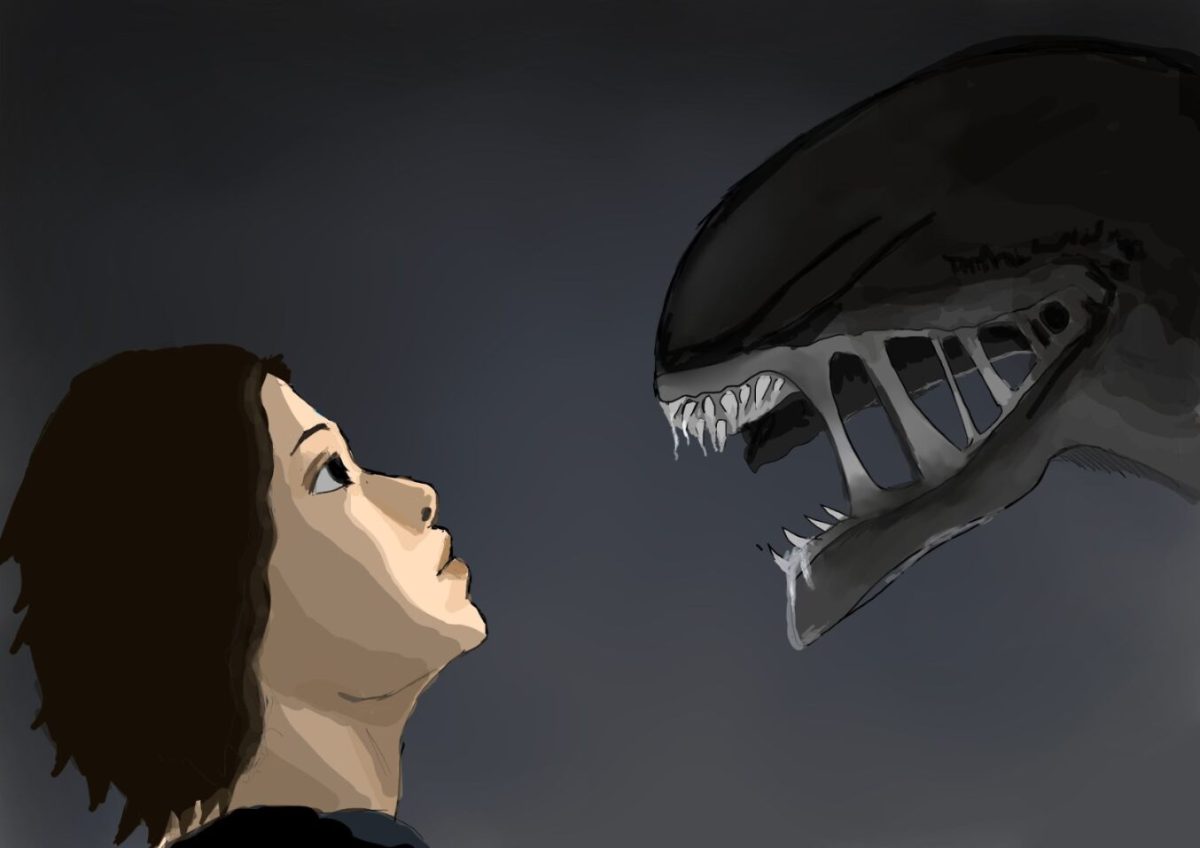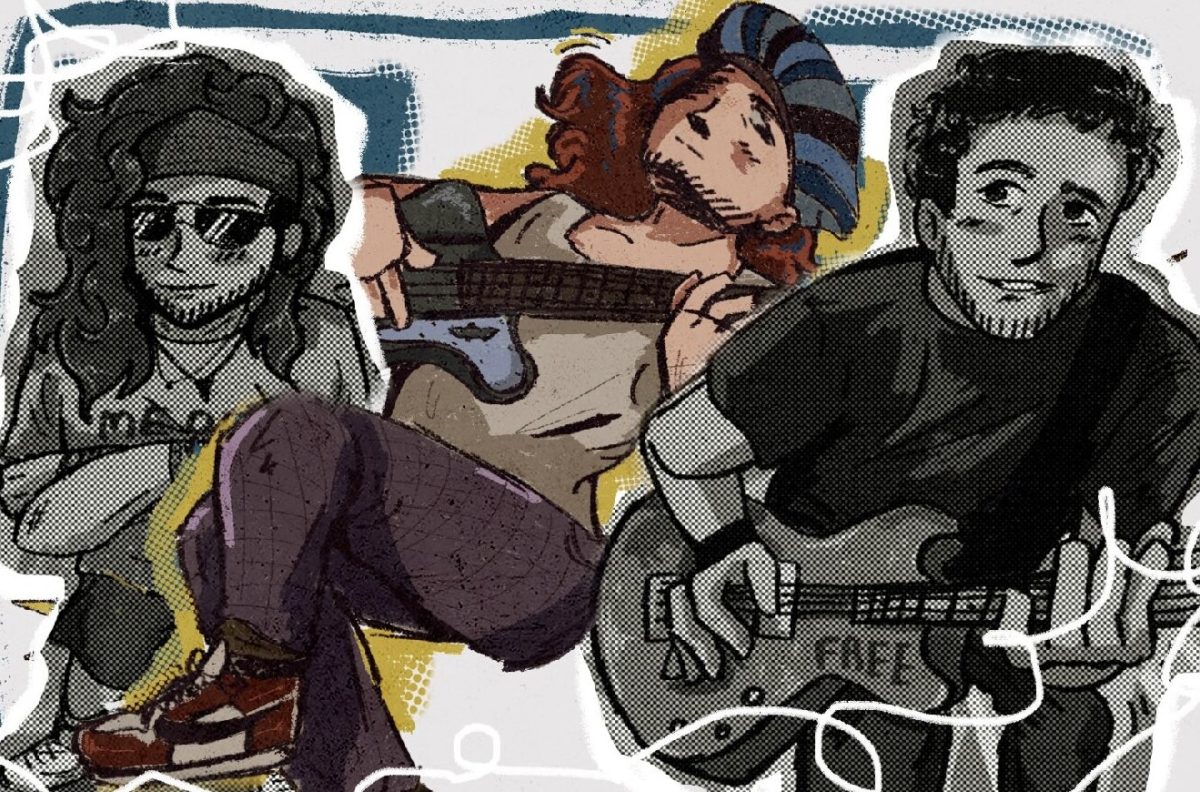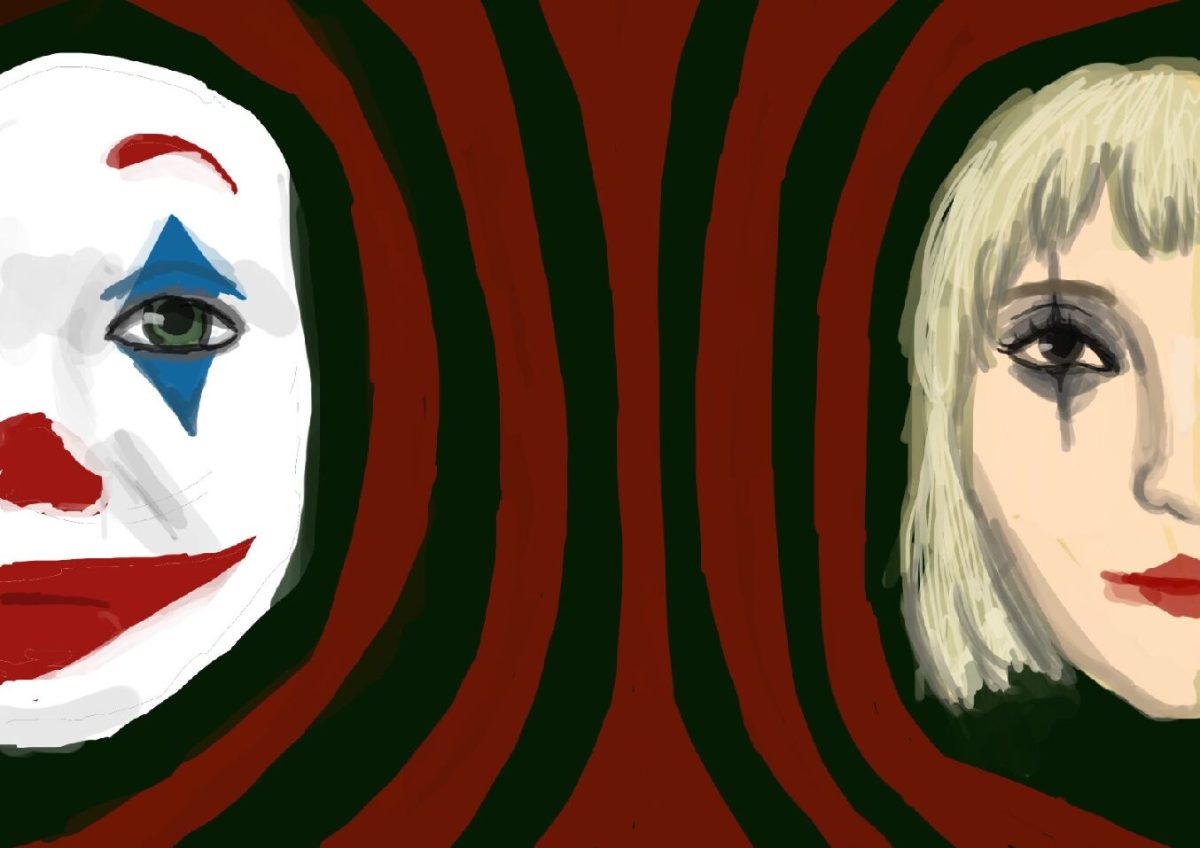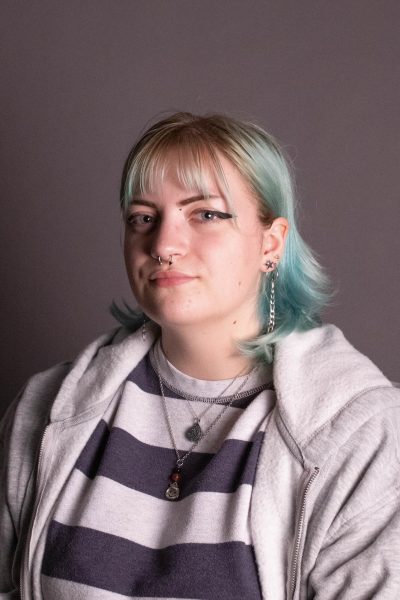The emotions were running high in the Black Box theater as actors did a full 360, taking in the audience that was on all four sides of them. A capstone that was meant to have an impact on the audience through both the acting and the audience experience as a whole. There has always been something to take away from theater productions, but “Alabaster” by Audrey Cefaly is one that stays with an audience.
On Sept 13 and 14, 2024, Sanorah Goldoff, a fifth year theater and special education major, was finally able to show what she had been working on for her capstone. This play was completely produced by Goldoff, allowing her the freedom to choose actors, a director, designers, and various other tech roles. Along with acting in “Alabaster,” Goldoff was also one of the actors who portrayed the story that had heavy themes about recovery and overcoming the past that may haunt you.
“[Alabaster] is a play about art and recovery in my opinion,” Goldoff said. “There are two women who dealt with loss recently in their pasts and they’ve always been more closed off and scared to move on from their pain. June, a tornado survivor, relies on her pet goat, Weezy, for emotional support. It’s Weezy who finally convinces her that it’s okay to move on from their past. They all display different levels of emotions and grief through losing someone so close to them.”
This heartfelt and heavy plot made performing with an audience on all sides an important aspect of the experience, both as an actor and an audience member. With the audience able to experience that story from all around, it opened up the actors to a completely different style of acting. This all-around concept in the black box sits the audience closer to the actors and therefore to the story that they are portraying.
While being vulnerable to the audience on all sides can seem like a scary concept, for Goldoff it seemed to open up a world of possibilities in terms of making the acting and the character she was portraying a more intimate experience.
“This allowed me to open myself up with my gestures, it made me feel more relaxed and realistic with my acting. The audience was so close, so every emotion and gesture had to be genuine. I felt like I was able to become the character better in this setting because I didn’t have to be animated or huge with my body or voice.” Goldoff said.
This intimate experience that the black box and all-around audience provides is an important part of what made this production so special. Though the overall experience that the production provided was a part of what made it so special, the fact the production of Alabaster was an almost entirely student produced production (excluding the director Heather Williams-Williams) also heavily contributed.
The cast for the show was given their scripts at the end of the last school year so when they got back to campus, they were able to just jump right into what needed to be completed. There was a lot of hours put into “Alabaster” and there was a lot of effort from students to make it work and they left the show behind with pride in the work they’d done. There is an extra pride for them in the fact that the cast had to have their acting portray such heart-aching subjects. The cast wanted to leave the audience with something to remember and keep close long after the lights came up and the show was over.
Second year Art Education Major, Elizabeth Schieffelbein is one of the cast members who felt that they had something they wanted the audience to take away from this show.
“I want the audience to really feel the connection with these characters, and truly consider and connect with what trauma they need to face.” Elizabeth Schieffelbein said.
Schieffelbein wasn’t the only cast member who felt this way, though. Having the audience truly experience what the characters were going through via acting is tough, but with the close proximity of the audience and the acting that could bring tears to people eyes, this story was truly able to be brought to life.
“I hoped that the audience would be able to empathize with our characters and feel transported through our acting,” Goldoff said. “Kind of like when you live vicariously through your friends, I wanted the audience to really know us and understand the pain that the characters endured. And then see how the characters are able to heal from the pain through their art and expression, and sometimes by having someone by their side to support them along the way.”
Trauma and sadness are large parts of life for almost everyone, and it exists long after the lights on the stage come up, but this story was to make people feel less alone in that. With acting that could make an audience feel like the characters were sitting right next to them, telling them their story. A capstone is an important, landmark event in a student’s life, but having a capstone that is meant to be as impactful as this one left its mark on actors and audience alike.








